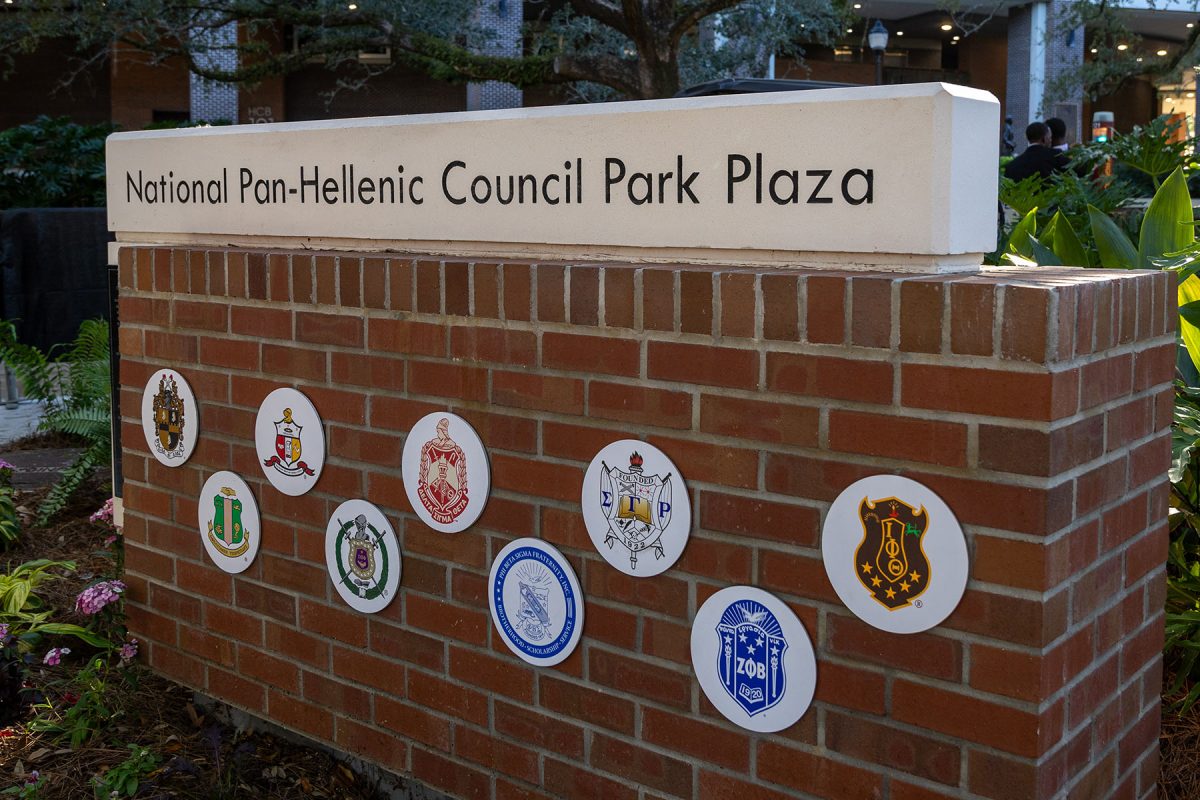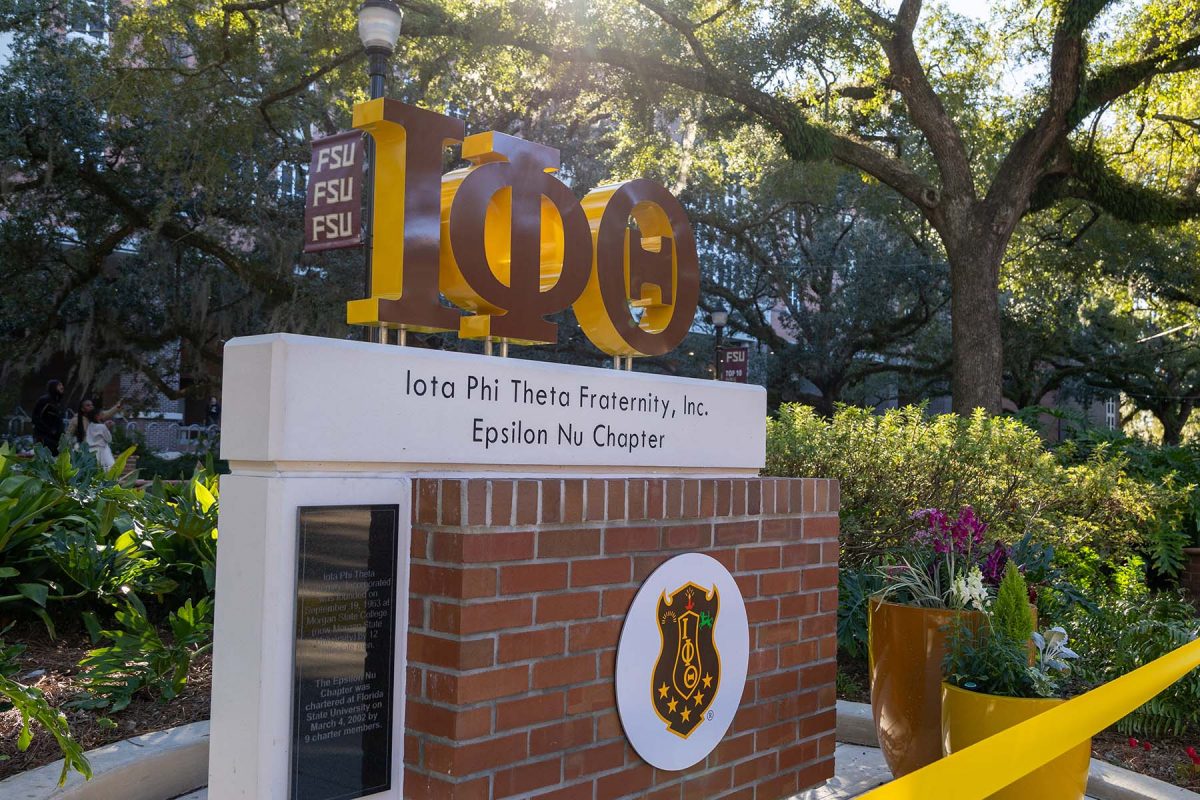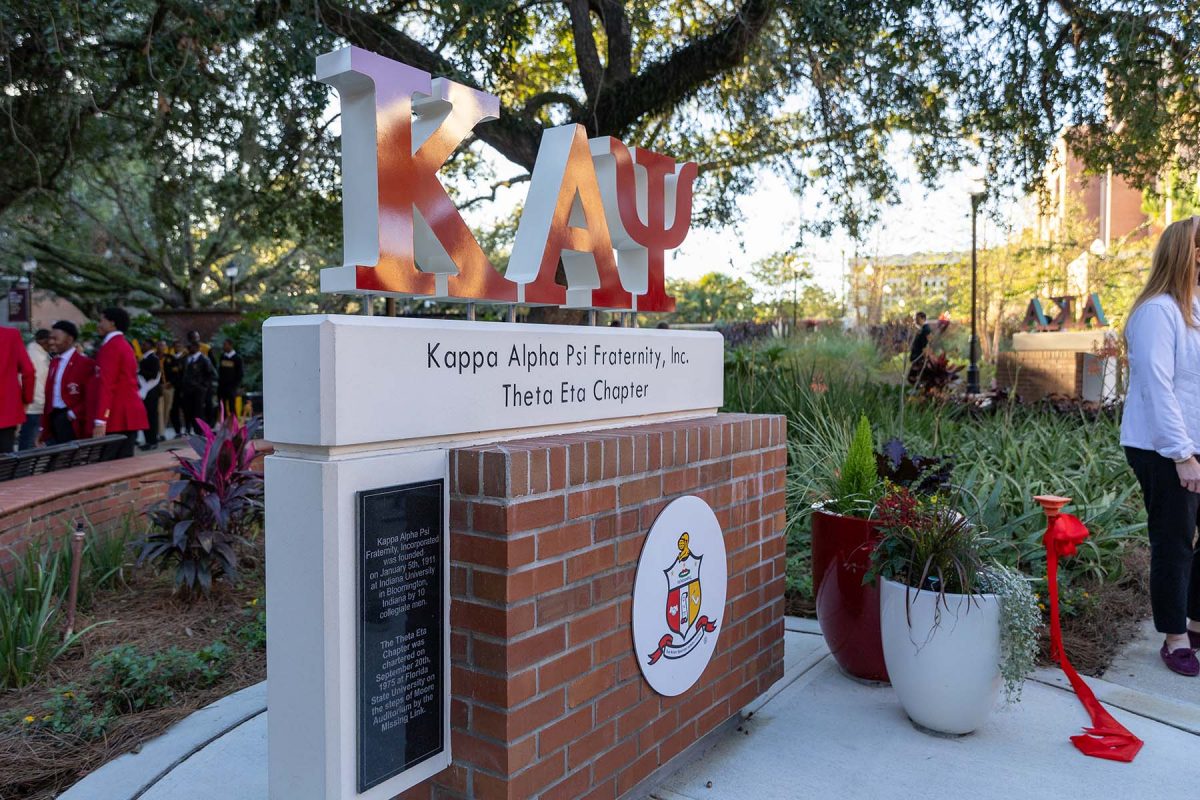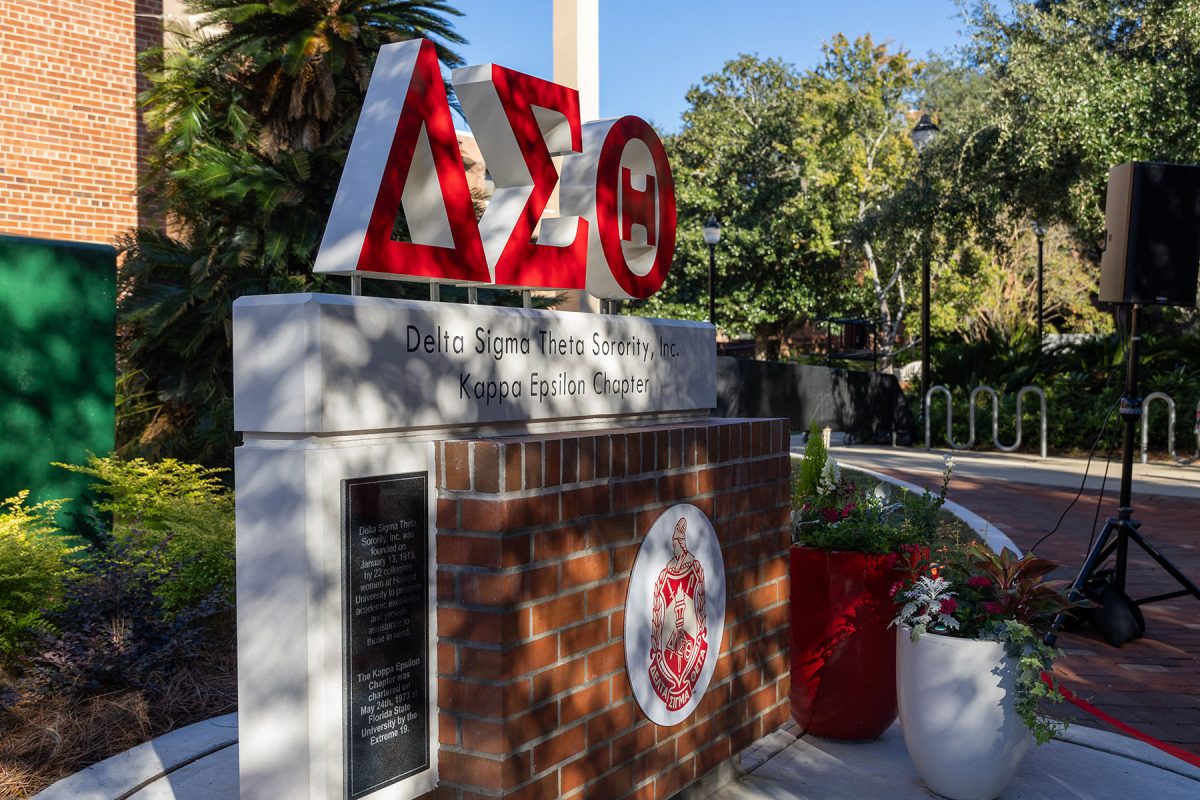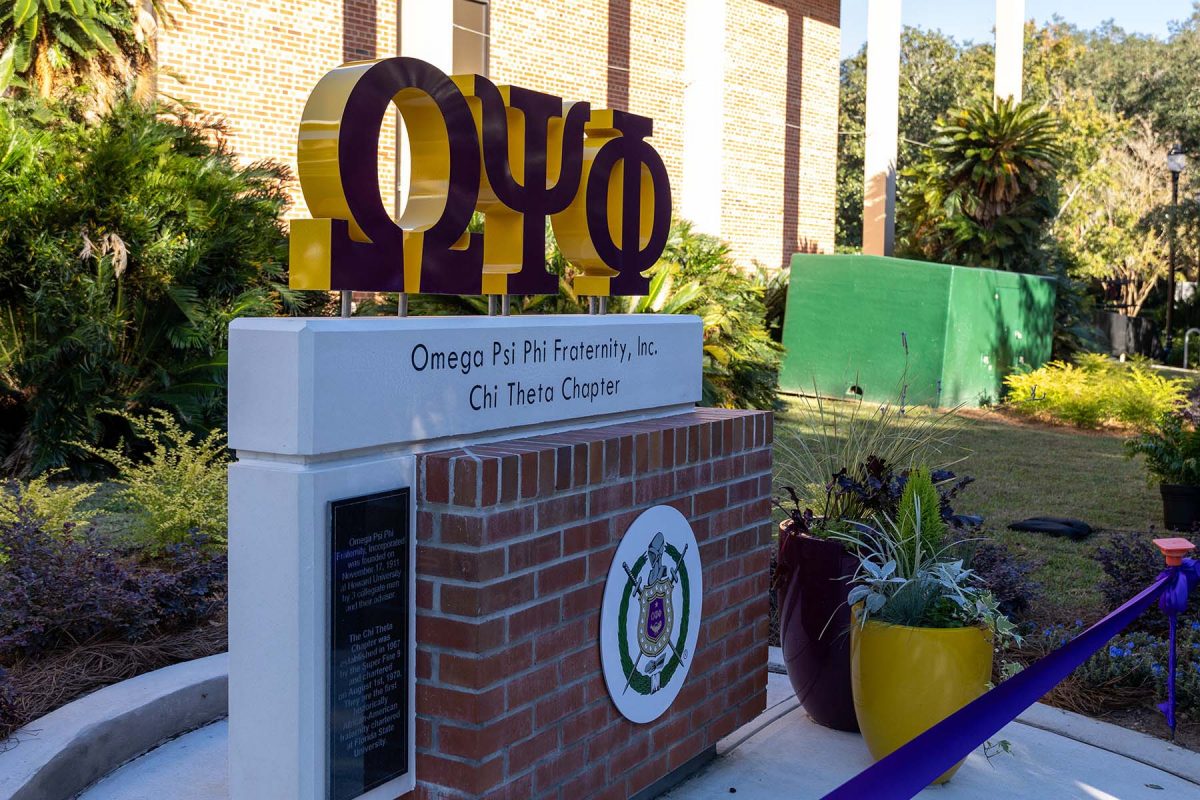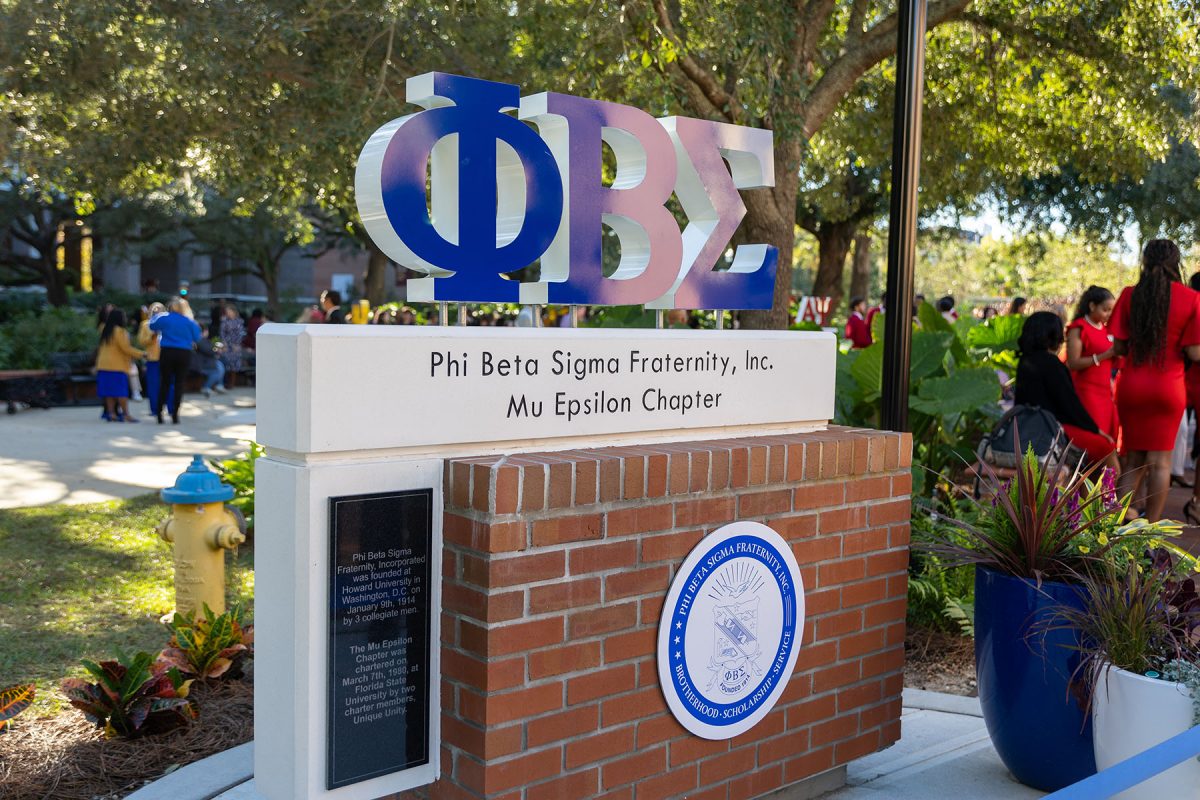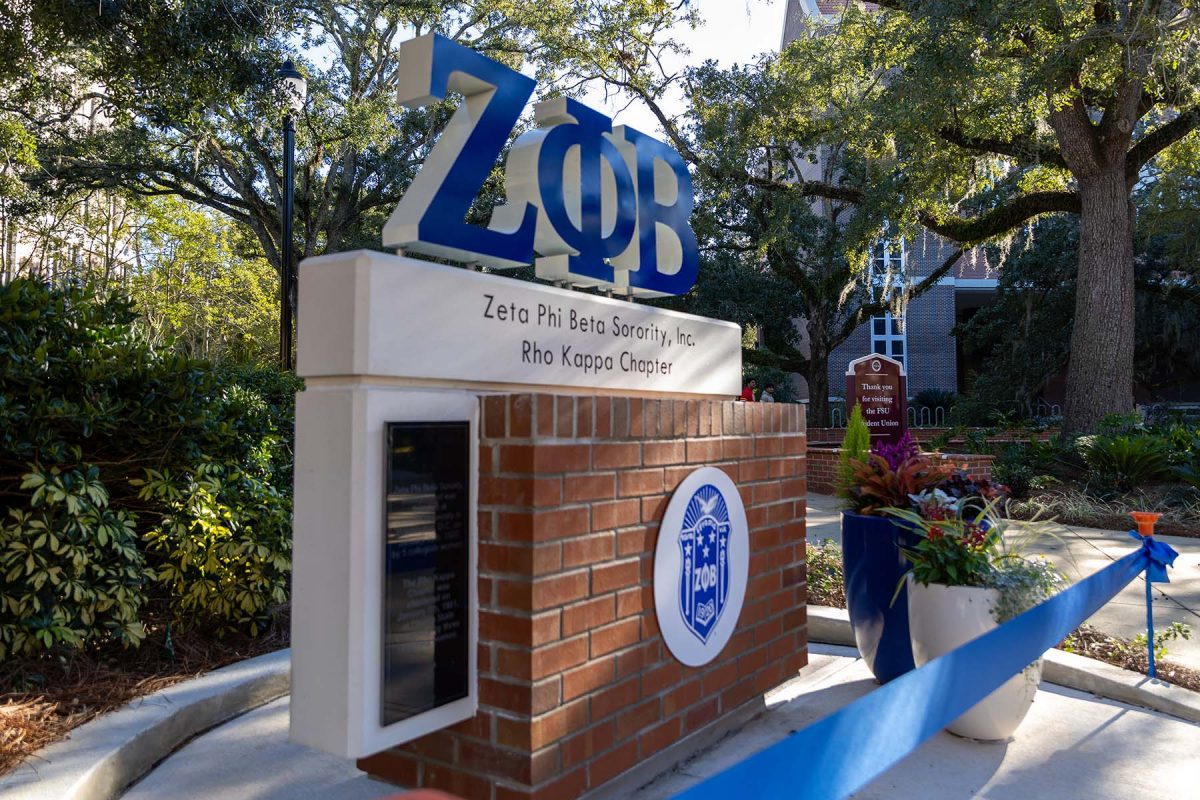Florida State University celebrated the opening of the National Pan-Hellenic Council Park (NPHC) with a ribbon-cutting ceremony after the university’s Homecoming Day parade on Nov. 22. The NPHC Park honors the nine historically African American/Black Fraternities and Sororities that fall under the National Pan-Hellenic Council (Divine 9), turning a long-held dream into reality.
The NPHC Park, located between the Student Union and Legacy Walk, features sculptures created by FSU’s Master Craftsman Studio that honor the heritage of the Divine Nine and their role in fostering a vibrant campus community. The NPHC logo is embedded into the hardscape of the park to mark the main entrance. Monuments for each of the nine Black Greek-letter organizations include red brick base statues with inscriptions detailing their national history, FSU-specific history and shields.
“I am so proud of the realization of FSU’s NPHC, which has been made possible by generations of alumni who were shaped at FSU through their fraternity and sorority experience,” said Amy Hecht, vice president for Student Affairs. “This is a significant addition to FSU and serves as a testament to the legacy and impact the Divine Nine organizations contribute to our campus and community.”
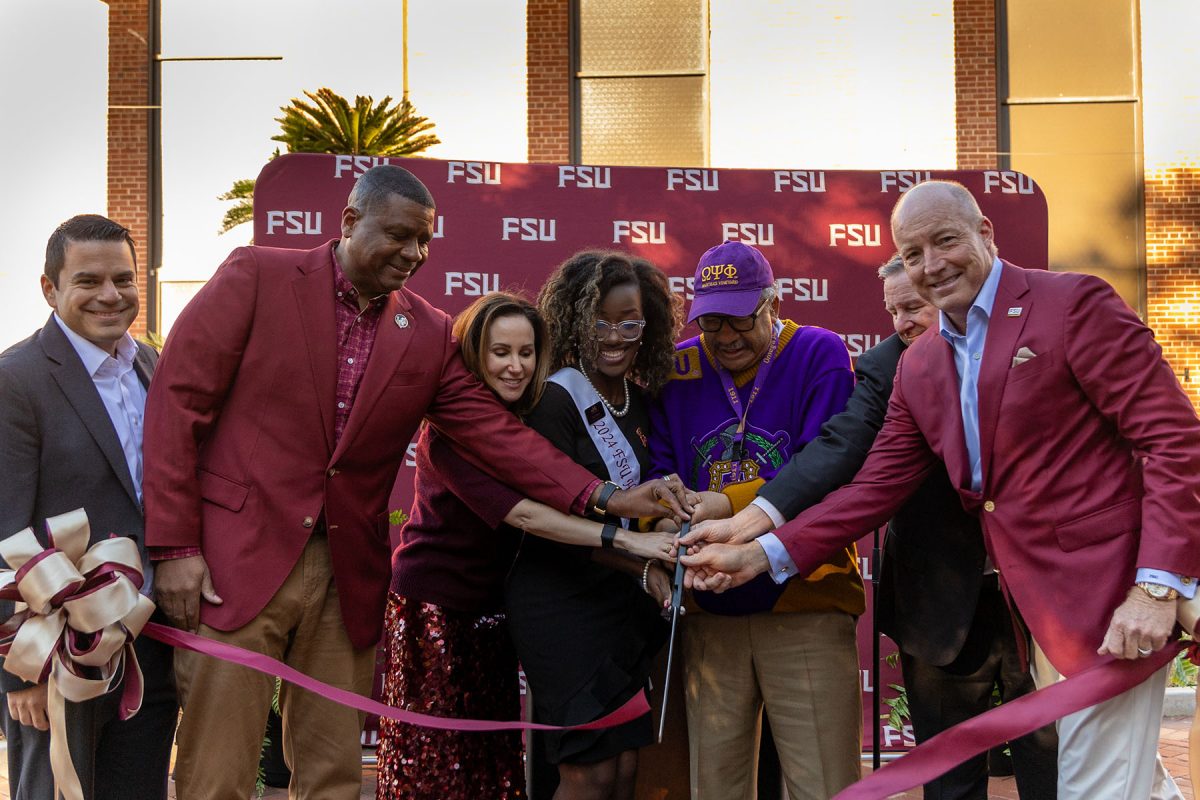
Last year marked the 60th anniversary of integration at FSU. The Black Student Union was established in 1968, with Omega Psi Phi being the first Divine Nine Chapter.
In the fall of 2021, the Division of Student Affairs held meetings with alumni, students and stakeholders to develop the architectural design for the park. Fundraising initiatives began the following year, resulting in nearly 300 donors contributing over $350,000 to date.
Alumnus and donor Sean Pittman, founder of Pittman Law Group, served as Student Body president at FSU from 1989-1990. A member of Kappa Alpha Psi Fraternity, Inc., he remembers painting their Greek letters on trees.
“Our organizations used to literally race to claim trees and fight about who got there first,” Pittman said. “This project represents the sentiment felt since long ago — that the history of Divine Nine organizations deserves a permanent footprint on campus to tell their stories. It gives me great pride to know that the work of myself and outstanding alumni who were members of these fraternities and sororities will be codified in the history of FSU.”
While the park itself had its ribbon cutting, each of the five fraternities and four sororities that make up the Divine Nine also cut an individual ribbon at their respective monuments.
The five fraternities and four sororities that make up the NPHC are:
- Alpha Phi Alpha Fraternity, Inc.
- Alpha Kappa Alpha Sorority, Inc.
- Kappa Alpha Psi Fraternity, Inc.
- Omega Psi Phi Fraternity, Inc.
- Delta Sigma Theta Sorority, Inc.
- Phi Beta Sigma Fraternity, Inc.
- Zeta Phi Beta Sorority, Inc.
- Sigma Gamma Rho Sorority, Inc.
- Iota Phi Theta Fraternity, Inc.
Many students, faculty, staff and donors attended the event, including FSU alumnus and former Tallahassee mayor John Marks, who urged current students to “hold on to the pride in the institutions you have helped to build.”
Rain Bellamy, who serves as National Pan-Hellenic Council President, is a member of Delta Sigma Theta Sorority, Inc., and is a member of FSU’s 2024 Homecoming Court, spoke at the ribbon-cutting event about what the park means for current and future students.
“For prospective students, the park is a beacon of inspiration showing them the transformative power and impact of Black Greek-letter organizations, and the profound sense of belonging, leadership and purpose they foster,” Bellamy said. “This park is not just a testament to our history, but a promise of a future filled with excellence, growth and unwavering community.”
FSU Planning, Design & Construction, and Facilities’ Grounds & Landscaping oversaw the project site analysis, overall layout, hardscape and landscape design and installation, as well as the brickwork and concrete precast for the statue’s base.
FSU’s Master Craftsman Studio designed the aluminum letters that stand on top of the monuments are called hollow form fabrication, a process similar to origami, but with steel or other metals. This method involves cutting the shape out of a sheet and its mirror image for the back, then cutting strips of metal to make up the sides, resulting in a hollow structure. This design is practical for creating weatherproof structures that can withstand the environmental elements.
With the park opening, the NPHC now has a permanent place in a central part of FSU’s campus.
“I am very excited to have a space dedicated to NPHC,” said Jamiah Johnson, vice president of Delta Sigma Theta Sorority, Inc. “I believe the opening of the NPHC park on campus is a meaningful step toward recognizing and celebrating the contributions of historically Black fraternities and sororities on campus. The park symbolizes a commitment to inclusivity and diversity while fostering a sense of belonging for members of the NPHC and the wider community.”
Fundraising efforts will continue to support the park’s maintenance and upkeep.
For more information, visit give.fsu.edu/NPHCpark.





